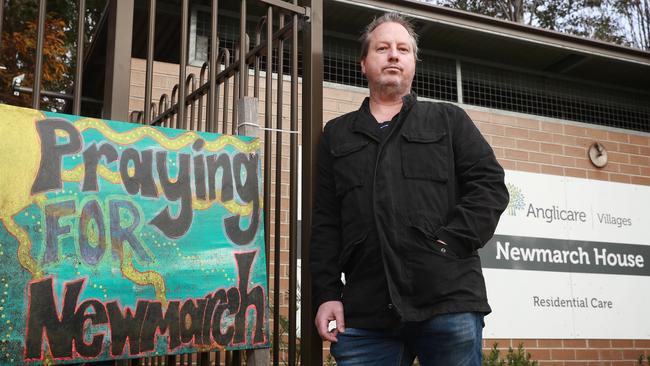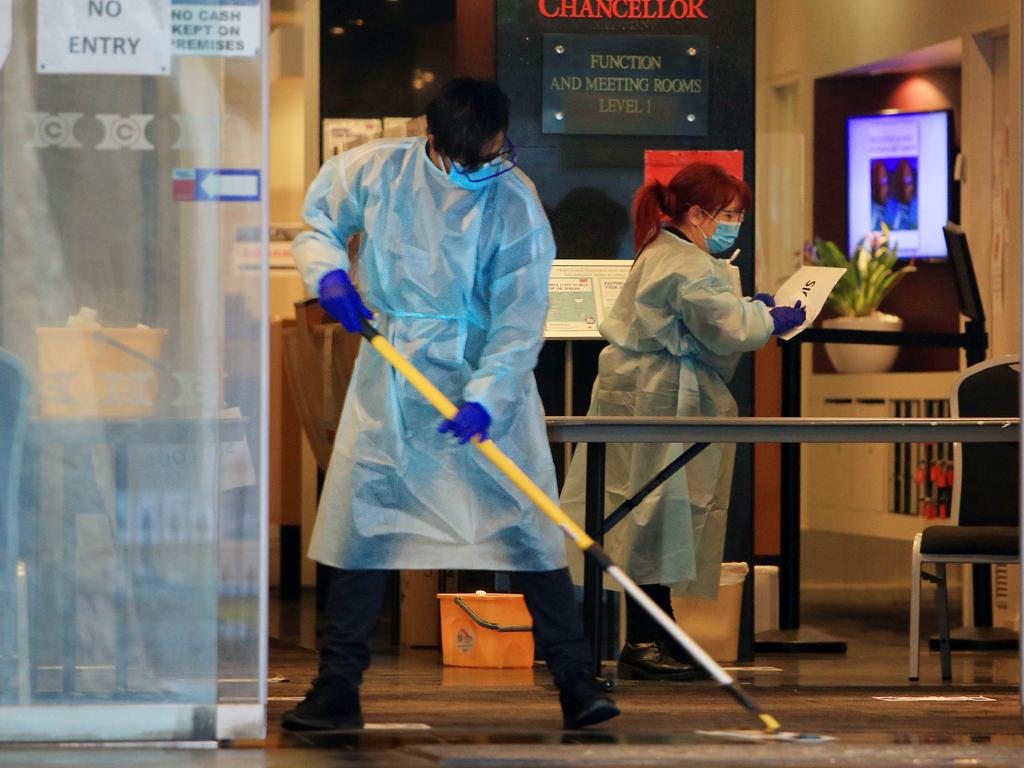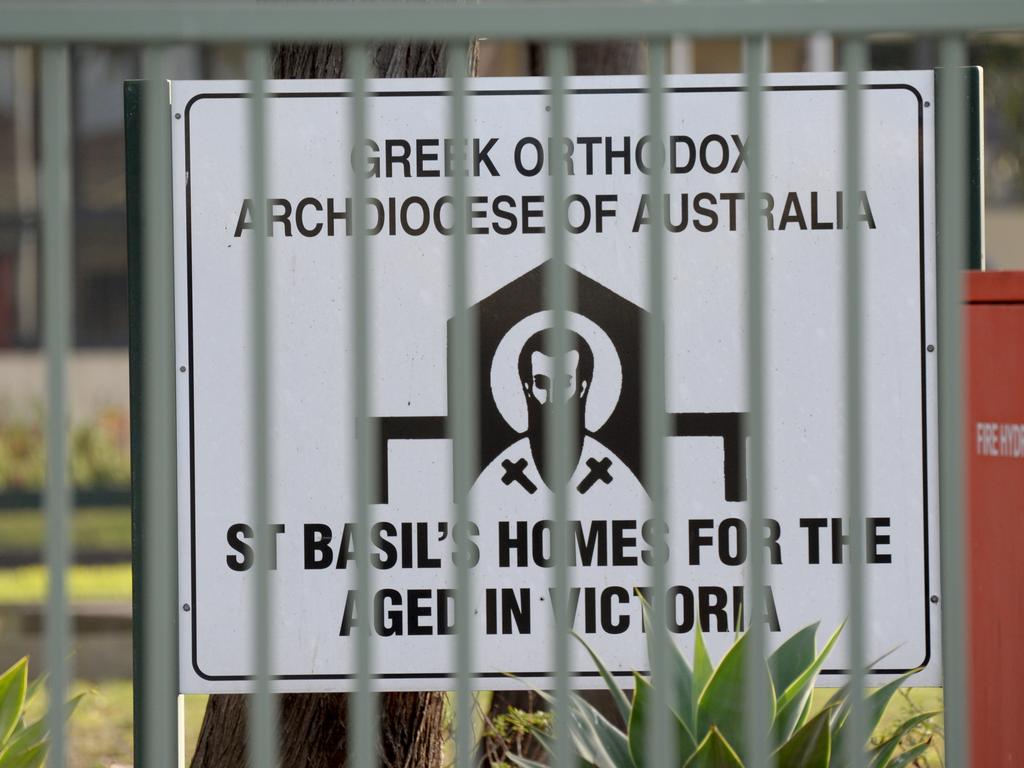Coronavirus fail: no help for the aged from federal authorities
Federal authorities have failed to prepare for, manage or even investigate the deadly spread of coronavirus through nursing homes, the aged care commission has heard.

Federal authorities have failed to prepare for, manage or even investigate the deadly spread of coronavirus through nursing homes, the aged care commission has heard.
And NSW Health was at odds with its federal counterparts about whether to move sick residents from aged care homes, a position labelled “intolerable” by the country’s aged care regulator.
As Australia recorded its deadliest day from the virus, with 19 deaths, including a record 14 in nursing homes, the aged care royal commission heard that, despite warnings from overseas that aged care residents were vulnerable to the disease and dying in huge numbers, government agencies had neglected the sector.
“While there was undoubtedly a great deal done to prepare the Australian health sector more generally for the pandemic, the evidence will reveal that neither the commonwealth Department of Health nor the aged care regulator developed a COVID-19 plan specifically for the aged care sector,” counsel assisting the commission Peter Rozen said.
Aged care quality and safety commissioner Janet Anderson, the industry regulator, was also accused of failing to developing or implement an appropriate COVID-19 response plan, and not investigating the two main nursing home outbreaks during the first wave of infections in March and April, Newmarch House and Dorothy Henderson Lodge in Sydney.
“It may come as a surprise to some that the aged care regulator has not investigated the circumstances of the Dorothy Henderson Lodge and Newmarch House outbreaks,” Mr Rozen said.
“Incident investigations are normally one of the key tasks of any regulator for obvious reasons. An investigation into the facts can inform future regulatory action.”
The aged care sector is reeling from a fast-climbing death rate due to COVID-19. More than 70 per cent of Australia’s deaths during the pandemic have been from residential aged care, one of the highest proportions in the world. Victoria is the current epicentre, with 138 people in aged care settings dying since July.
However the commission has made it clear its investigation of COVID-19 in aged care will not include the current Victorian outbreak, which has seen 122 nursing homes infected with the virus. Commissioner Tony Pagone said preparing for the commission would distract providers from the immediate work they needed to be doing to protect and care for their residents. The focus instead will be on earlier outbreaks in NSW, especially in Newmarch House, where 17 residents died, and Dorothy Henderson Lodge, where six residents succumbed to the virus. The commission heard Newmarch House lacked high-level infection control expertise until at least two weeks into the outbreak and there were concerns about lack of access to appropriate PPE and inadequate training in its correct use.
The nation’s main COVID advisory body, the Australian Health Protection Policy Committee, also came in for criticism, with the commission hearing it had only offered three statements specifically on aged care out of 45 since February, compared with eight for children and schools. Further, it provided no target advice for six weeks between mid-June and early August, during which the number of new daily infections in Victoria grew from 25 to 413.
Federal Aged Care Minister Richard Colbeck rejected suggestions the federal government, its agencies and the AHPPC didn’t have a plan for aged care to deal with the threat of COVID.
“The Australian government has been continuously building on our response to COVID-19 in residential aged care since January 2020, with the aged care sector and with state and territory governments and health authorities, incorporating learnings from Australia and other countries,” Senator Colbeck said. “Investments in measures to support aged care during the pandemic have exceeded $850m so far.
“Since January it has been engaging and preparing the sector for the impact of the pandemic when the Department of Health issued fact sheets, specifically focused on aged care. In February, the department ramped up its ongoing communication with providers, ensuring each had the latest information for aged care workers, residents and families.”
With a death rate of about one in five for people over the age of 80 who contract coronavirus, Mr Rosen said the virus was “the greatest challenge the Australian aged care sector has ever faced”.
“We have seen the unfolding disaster in more than 100 of Victoria’s nursing homes,” he said. “Over 1000 residents have been diagnosed with COVID-19. Of these people, 168 have died. Grandparents, parents, siblings and friends. A human tragedy.”
The commission grappled with the broad issue of state-federal responsibility for care.
An example was a dispute between commonwealth and NSW officials over a policy not to transfer sick residents of Newmarch House to hospital earlier in the pandemic.
Ms Anderson was particularly concerned. In an email on April 16, she wrote: “… if there is a view sitting behind the NSW Health position that aged care residents with COVID-19 should always be cared for in situ and should not be transferred to a hospital in any circumstances, then WE MUST CALL THIS OUT as an intolerable and unsupportable assumption.”
Mr Rozen raised a number of the actions of the aged care regulator as warranting further explanation, including how long it took to intervene at Newmarch House.
“By the time … regulatory action was taken the outbreak had been raging at Newmarch House for over a month and 16 of the residents had passed away,” Mr Rozen said.
Anthony Bowe’s 76-year-old mother Patricia recovered from coronavirus at Newmarch House, but he still finds it painful to hear details of what happened at the aged care facility. “Newmarch House is the only facility on the planet that refused to transport COVID-positive elderly people to empty hospitals,” Mr Bowe said.
“There’s no excuse, so it’s a human rights violation to not give them the best chance of survival. The best chance of survival was always in a hospital and never in a nursing home.
“They tried to convince every family that they could provide the best care in the home as in a hospital ward.”








To join the conversation, please log in. Don't have an account? Register
Join the conversation, you are commenting as Logout